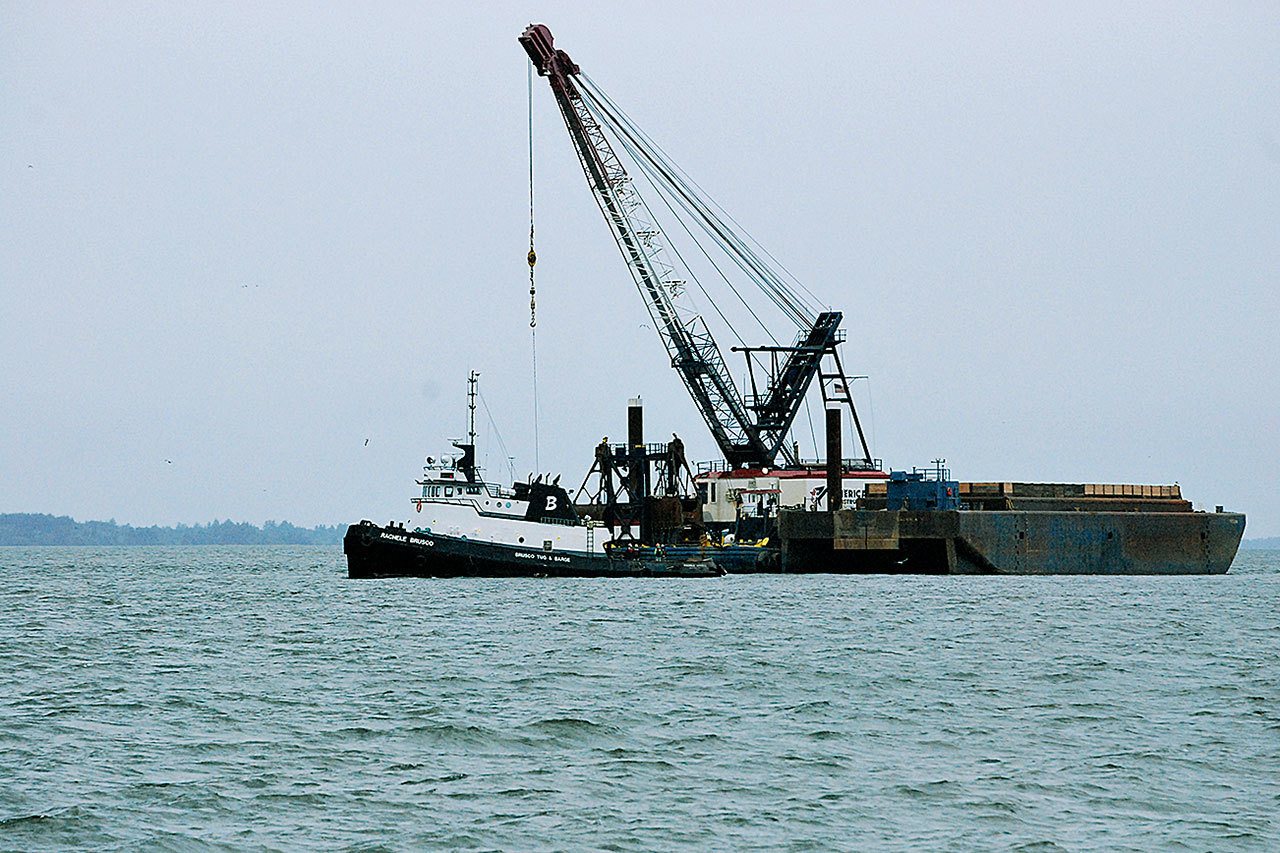The long-awaited dredging project to deepen the federal navigation channel and improve efficiency and reliability of navigation to and from Grays Harbor got under way Monday morning as crews began unloading equipment and setting up shop.
American Construction Company, based out of Tacoma, has the $27 million contract to remove approximately 3.5 million cubic yards of material and maintain the channel in the inner harbor, said Patricia Cook Graesser of the U.S. Army Corps of Engineers Public Affairs Office. The contractor will field day and night crews of six to eight people each around the clock on 12-hour shifts until the work is finished.
The project will deepen the channel from minus-36 feet to minus-38 feet MLLW (Mean Lower Low Water), which is the average height of the lowest tide recorded each day. The work is expected to be completed by late September of 2018.
“They are starting in the eastern station of the north reach in middle of the harbor in order to avoid impacting tribal fishing that normally occurs this time of the year,” Graesser said.
The work on the channel which begins at Crossover Reach (the middle of the harbor) and continues through Cow Point (eastern end of Terminal 4) Graesser said, will reduce delays caused when ships have to wait for the right tidal conditions and it will cut transportation costs for the existing and projected future traffic of deep-draft vessels, she said.
The end result of the project, however, doesn’t mean bigger ships will be calling at the Port.
“We won’t be seeing larger vessels navigating the Harbor,” said Gary Nelson, executive director of the Port of Grays Harbor. “But what we will see is the Panamax designed vessels that come into the Harbor be fully loaded, which in most cases means an increased cargo load of about 10 percent.”
One might think the increased cargo loads would translate into bigger paydays for the Port, but that isn’t necessarily the case here, says Nelson, but adds the project will greatly benefit the Port.
“Since our loading services are typically by the metric ton, theoretically, that would result in bigger paydays for the Port. However, since most of our load rates go to pay longshore labor it is not a ‘net payday’ for the Port,” Nelson said. “The benefit is to U.S. grown and produced goods by insuring that USA products have efficient avenues to international markets. And because we are 95 percent export, the channel improvements are particularly effective in helping us stay competitive in the market place as cargoes can be loaded as efficiently as possible, which allows us to remain a Port of national significance.”
In 2014 the Seattle District of the Corps of Engineers determined there was a federal interest in deepening the channel and the project was approved for construction in 2015.
Three options were considered to deepen and maintain the channel over the next 50 years.
Alternative No. 1 was to take no action and continue channel maintenance at minus-36 feet MLLW. The second alternative was to deepen the channel to minus-37 feet MLLW, which required a one-time removal of 811,000 cubic yards of sediment and an annual maintenance dredging of 50,000 cubic yards.
The third alternative, which was selected, deepens the channel to minus-38 feet MLLW and requires a one-time removal of an additional 1,752,000 cubic yards of sediment to deepen the channel and an annual maintenance dredging of an estimated 107,000 cubic yards.
The suitable dredged material will be placed at either the Point Chehalis or South Jetty disposal site, and will also be used for beach nourishment at South Beach and Half Moon Bay as a deterrent to beach erosion. Approximately 22,000 cubic yards of material is deemed unsuitable for open water disposal and will be placed in an upland placement site near Terminal 3.
Additional information on the project is available at the Corps’ website at www.nws.usace.army.mil. Click on Grays Harbor Navigation on the Most Requested drop down tab.



